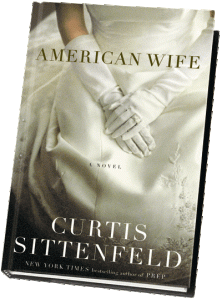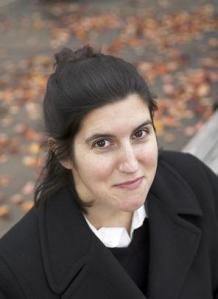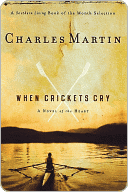
 Wow! What a fantastic first novel from Kathryn Stockett. It is said that you should write about what you know and it seems she did. Stockett was raised in Mississippi with a black family maid who told her stories about picking cotton as a child. She really nailed the voices of the women in her story, written primarily about two black maids and one young white woman who is appalled at the way the help is treated in their community in 1962.
Wow! What a fantastic first novel from Kathryn Stockett. It is said that you should write about what you know and it seems she did. Stockett was raised in Mississippi with a black family maid who told her stories about picking cotton as a child. She really nailed the voices of the women in her story, written primarily about two black maids and one young white woman who is appalled at the way the help is treated in their community in 1962.
Miss Eugenia Phelan, nicknamed Skeeter at birth by her brother, graduated from Ole Miss with a diploma and ambition when all of her girlfriends were getting engaged and married. While away at college, her beloved maid, Constantine, disappeared and no one will tell Skeeter what happened or where she’s gone. This mystery is a thread that runs through the entire book, entangled with her desire to improve relations between white women and their hired help. Skeeter wanted to be a writer and applied for a position as an editor with Harper & Row Publishers in New York. The response she receives from the senior editor sets in motion the clandestine project she is writing with the help in town, telling the good and the bad about the white families they work for. This was a very dangerous project for all involved during this time of prejudice and racial unrest in Mississippi.
Aibileen is the first maid to come on board with the tell-all project that Skeeter proposes. They originally connected when Skeeter took a job at the local newspaper, writing a column on keeping a clean house. Readers would write in with cleaning questions and Skeeter would answer them. The catch was that she knew next to nothing about cleaning and asked Aibileen for help. Aibileen had worked for many white families over the years and was currently helping to raise her 17th white baby while cooking and cleaning.
An excerpt by Aibileen:
“After while my mind done drifted to where I wish it wouldn’t. I reckon I know pretty well what would happen if the white ladies found out we was writing about them, telling the truth a what they really like. Womens, they ain’t like men. A woman ain’t gone beat you with a stick. Miss Hilly wouldn’t pull no pistol on me. Miss Leefolt wouldn’t come burn my house down.
No, white womens like to keep they hands clean. They got a shiny little set a tools they use, sharp as witches’ fingernails, tidy and laid out neat, like the picks on a dentist tray. They gone take they time with em.
First thing a white lady gone do is fire you.”
 Minny also agrees to tell her story to Skeeter, although very begrudgingly. She is a sassy woman who has lost several jobs for speaking her mind to her employer. Minny is the bouncing red ball in this book — you have to keep your eye on her all the time and just try to keep up with the highs and lows of her life. When the project is floundering, Minny is the catalyst that pushes it into high gear while at the same time providing a safety net to the vulnerable maids in the community.
Minny also agrees to tell her story to Skeeter, although very begrudgingly. She is a sassy woman who has lost several jobs for speaking her mind to her employer. Minny is the bouncing red ball in this book — you have to keep your eye on her all the time and just try to keep up with the highs and lows of her life. When the project is floundering, Minny is the catalyst that pushes it into high gear while at the same time providing a safety net to the vulnerable maids in the community.
As the story progresses, the tension becomes greater and greater. This was one of those “just one more chapter” books that I couldn’t put down because I simply had to find out what happened next. My mind stayed on these women and their stories even when I wasn’t reading. So well done!
“The Help” is our book club’s pick for January — was a great choice! Visit Stockett’s website at http://kathrynstockett.com/
Filed under: book review, reading | Tagged: book review, kathryn stockett, new york times bestseller, novel, read, the help | 4 Comments »






 This book nearly leaves me speechless. It brought back to me all the tough parts of high school — anxiety, awkwardness, the yearning to fit in. My high school years were a long time ago so I can’t even imagine how much tougher it’s become on today’s kids.
This book nearly leaves me speechless. It brought back to me all the tough parts of high school — anxiety, awkwardness, the yearning to fit in. My high school years were a long time ago so I can’t even imagine how much tougher it’s become on today’s kids.